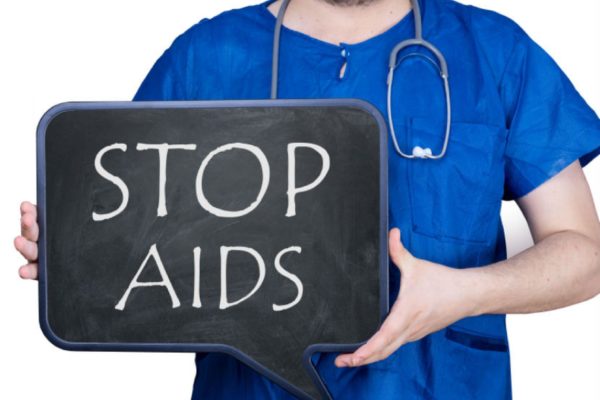I couldn’t sleep last night after my clinic.
My patient is dying from AIDS. When his family found out that he has HIV, he was disowned. His sister kicked him out of her house. He has been self-medicating the shame with alcohol and now has liver disease and likely cancer. He feels so terrible each day that he finally stopped drinking on his own. He cannot miss time at his landscaping job, so he rarely can travel the hour each way to the clinic. He is terrified for his friends to find out his HIV status, so he has withdrawn and lives alone with his girlfriend, who is too scared to get tested herself. He prays and reads his Bible but has no hope and has contemplated suicide. His fear of hell and his work are the only things keeping him alive.
My very next patient was diagnosed with HIV six months ago. She was despondent and started drinking and smoking. She was scared to tell her “traditional Hispanic family” [her words]. She prays daily, which she credits with giving her the resolve to take medication and live positively. Yesterday, she was glowing. First, she told her sister who took her in to live with her. Then, she told her mom and was showered with love. So she stopped drinking and smoking on her own and now works helping elderly patients as a certified nursing assistant. Her biggest health concern now is obesity. Her HIV viral load is undetectable for the first time, which means she cannot transmit the virus and she can live a long, healthy life. We celebrated in that room, and she said she was going to have a party with her family.
What is the difference between their trajectories toward death and life? They have the same doctor and the same access to life-saving medicines. The answer is stigma.
2018 is the best of times to be living with HIV. We have numerous, nearly miraculous, one-pill-a-day drug regimens that make the virus undetectable in the blood with no side effects. We have pre-exposure prophylaxis that reduces new HIV infections by more than 90 percent. Life expectancy for people living with HIV on medication almost approximates that of the general population. Public health officials have shown that with effective use of these current tools, we can end the HIV epidemic in our lifetime.
However, 2018 is also the worst of times to be living with HIV.
We still have no cure or vaccine. Given highly effective treatments and prevention strategies, every new infection and every death from AIDS is even more tragic. An African American man who has sex with men (MSM) has a 50 percent chance of becoming HIV infected in his lifetime; for Hispanic MSM the risk is 25 percent; and white MSM have a 10 percent risk.
A disproportionate number of these tragedies are happening in the American South. Travis, Dallas, and Harris counties have similar rates of new HIV infections as San Francisco. But unlike San Francisco, they have not decreased new infections in recent years. There are many reasons for these disparities between races and regions, but underlying all of them is stigma. Stigma is literally killing people living with HIV.
Stigma prevents people from getting tested for HIV. Stigma prevents people from coming to the clinic and engaging in care. Stigma leads to social isolation and chronic stress, both of which increase mortality for all people, not just people living with HIV. Remember that life expectancy with HIV nearly approximates that of the general population. Stigma contributes to the remaining gap.
Without addressing stigma, people will continue to die needlessly. There is no medication for stigma. Overcoming stigma requires a conscious awareness. It is a choice.
We can choose to love our friends and family with HIV, or we can disown them. We can choose to take people into our lives, or we can kick them out. We can support them to live positively with HIV, or we can ignore them until they die. Each of us has a role to play in ending the HIV epidemic, and it starts by ending stigma. End the winter of despair for our patients. Be part of the spring of hope.
Parker Hudson is an assistant professor of internal medicine in the Dell Medical School at The University of Texas at Austin.
A version of this op-ed appeared in the Houston Chronicle, Dallas Morning News, San Antonio Express News, and Psychology Today.
To view more op-eds from Texas Perspectives, click here.
Like us on Facebook.




